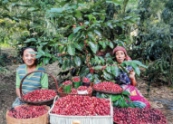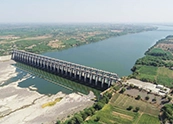4.2 NABARD’s Approach to Promoting Sustainable Development
Sustainable development represents a comprehensive strategy that harmonises ecological, economic, and social goals to ensure the enduring vitality and productivity of the ecosystems. This framework emphasises the conservation of biodiversity, the safeguarding of water and soil resources, and the mitigation of climate change through effective carbon sequestration. By actively engaging local communities in governance and decision-making processes, NABARD’s commitment to sustainable development not only honours indigenous rights but also bolsters economic sustainability. This inclusive approach fosters a resilient ecosystem that can thrive while meeting the needs of present and future generations. In this endeavour, NABARD’s Wadi approach, supported by its Tribal Development Fund (TDF), has been pivotal in promoting environmental sustainability while securing sustainable livelihoods for tribal families and mitigating migration pressures. For greater inclusivity, empowerment, and upliftment of tribal communities, TDF has expanded its scope beyond orchard farming to support other activities like sericulture, apiculture, animal husbandry, lac cultivation, eco-tourism, pisciculture, micro- enterprise development, and collection of Non-Timber Forest Products (NTFPs), to benefit landless tribal families also.
For instance, the TDF project in Poothadi Block, Wayanad, Kerala, has increased the income of agricultural households and improved their standard of living by providing safe roofing, access to clean drinking water, and better electricity supply.
By diversifying livelihood options, NABARD not only enhances the economic stability of tribal communities but also promotes the sustainable use of natural resources. This integrated approach ensures that the benefits are inclusive and far-reaching, contributing to the overall resilience and well-being of these communities.
Impact of NABARD’s TDF (as per various impact evaluation studies conducted by NABARD):
Household income
Annual income for tribal households increased by 15-40%, driven by diversified agricultural practices.
Agricultural productivity
Productivity rose by 15-49% due to the introduction of horticultural crops and water resource improvements.
Women empowerment
Women’s participation in SHGs grew by 40%, with a 15% increase in their role in decision-making.
Food security
Beneficiary households saw a 25% improvement in food security and a more diverse food supply year-round.
Quality of life
Increased income and better access to amenities and sanitation have enhanced overall living standards.
Migration reduction
Migration rates decreased by 5-25% within project villages.
Farm employment
Farm labour days increased from 140 to 250 annually.
Education access
There was a notable rise in school attendance for girls, with educational expenses increasing fourfold.
Nutritional gardens
Over 75% of beneficiary households established nutritional gardens in their backyards,contributing to improved nutrition.



